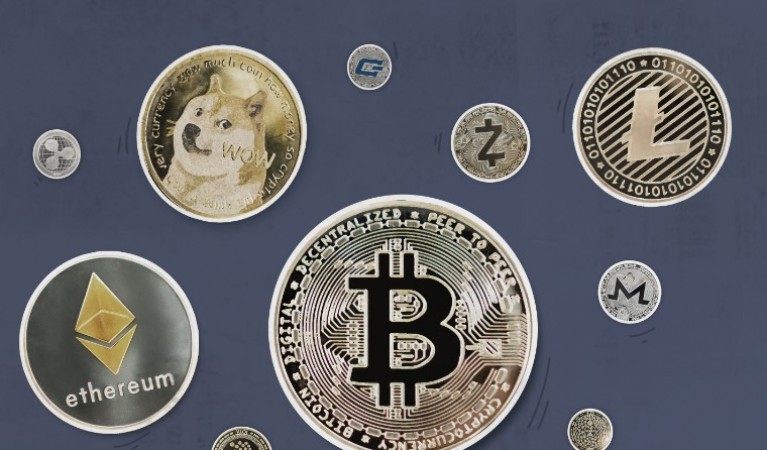
The cryptocurrency market is infamous for its intense volatility, with charges regularly experiencing fast fluctuations driven by investor sentiment and marketplace psychology. Understanding the mental elements that impact investor conduct is critical for navigating the ups and downs of crypto market cycles. In this newsletter, we will explore the psychology of market cycles, how investor sentiment affects rate movements in the crypto marketplace, and strategies for dealing with emotions at some stage in unstable durations. Understanding market trends is just the tip of an iceberg, there is much more to learn. Visit Trader 360 Cipro Website now and learn investing from professionals.
The Four Phases of Market Cycles
Market cycles in the cryptocurrency market, as in conventional economic markets, typically observe four awesome phases: accumulation, uptrend, distribution, and downtrend. Each section is characterized by unique investor behaviors and sentiments that force rate moves.
Accumulation: During the accumulation section, prices are low and investor sentiment is pessimistic. Smart money buyers take advantage of undervalued property and collect positions even as most market participants continue to be skeptical or frightened.
Uptrend: As prices begin to upward thrust, optimism and exhilaration build amongst buyers, leading to a bullish sentiment. FOMO (worry of missing out) sets in as more traders leap into the market, driving prices higher. The uptrend segment is characterized by sturdy shopping for pressure and increasing buying and selling volumes.
Distribution: In the distribution section, prices attain height stages, and euphoria grips the market. Greed will become the dominant emotion as investors rush to capitalize on the perceived possibility of brief earnings. Smart cash investors start to promote their positions and take profits, while less skilled buyers hold to shop for at inflated prices.
Downtrend: Once the distribution section peaks, fees start to decline, triggering panic-promoting amongst investors. Fear and uncertainty grip the marketplace as costs fall sharply, leading to capitulation and despair. The downtrend phase is characterized by a lack of self-belief, enormous promoting strain, and declining buying and selling volumes.
Psychological Factors Driving Market Sentiment
Several mental factors have an impact on investor sentiment and behavior for the duration of market cycles. During bull markets, greed drives investors to chase returns and take excessive risks, while worry motivates them to sell at the first signal of a downturn.
Herd Mentality: Herd mentality, or the tendency to comply with the gang, is well-known inside the crypto marketplace. Investors frequently make selections based on what others are doing as opposed to carrying out unbiased analysis. This herd conduct can make bigger marketplace movements and contribute to the formation of bubbles and crashes.
Confirmation Bias: Confirmation bias is the tendency to try to find out records that confirm pre-current ideals and forget about proof that contradicts them. In the crypto market, traders can also cherry-pick records or news that support their bullish or bearish outlook, leading to biased decision-making.
Overconfidence: Overconfidence can lead traders to overestimate their capabilities and underestimate risks. During bull markets, overconfident buyers may tackle excessive leverage or make speculative bets primarily based on unrealistic expectations of destiny returns.
Loss Aversion: Loss aversion refers back to the tendency to select heading off losses over attaining profits of the same value. In the crypto market, traders may also keep losing positions for too long, hoping for a reversal, in preference to reducing their losses and preserving capital.
Strategies for Managing Emotions in Crypto Investing
Develop a Plan: Establish a clean funding plan with predefined goals, danger tolerance, and exit techniques. Having a plan in place will let you stay disciplined and avoid making impulsive choices based totally on emotions.
Stay Informed: Stay informed about marketplace trends, information, and trends; however, be selective about the resources of statistics. Avoid falling victim to sensationalist headlines or social media hype and focus attention on credible sources of records.
Practice persistence: understand that marketplace cycles are a natural part of investing and that volatility is to be predicted. Maintain an extended-time period angle and keep away from getting stuck up in brief-time period price movements or every-day fluctuations.
Diversify Your Portfolio: Diversification can help spread hazards and decrease the effect of volatility on your portfolio. Invest in a combination of various cryptocurrencies, asset classes, and funding strategies to mitigate danger and enhance long-term returns.
Set realistic expectations: control your expectations and avoid chasing unrealistic returns or seeking to time the marketplace. Accept that losses are a possibility in investing and recognize the importance of achieving a constant, sustainable increase over the years.
Conclusion:
Understanding the psychology of marketplace cycles is crucial for successful investing within the cryptocurrency marketplace. By recognizing the emotional drivers of investor conduct and using strategies to manipulate feelings efficiently, traders can navigate the highs and lows of market cycles with greater self-assurance and resilience. Whether you're a pro trader or a beginner investor, cultivating self-awareness and emotional intelligence is fundamental to achieving long-term success in the dynamic and volatile world of crypto investing.